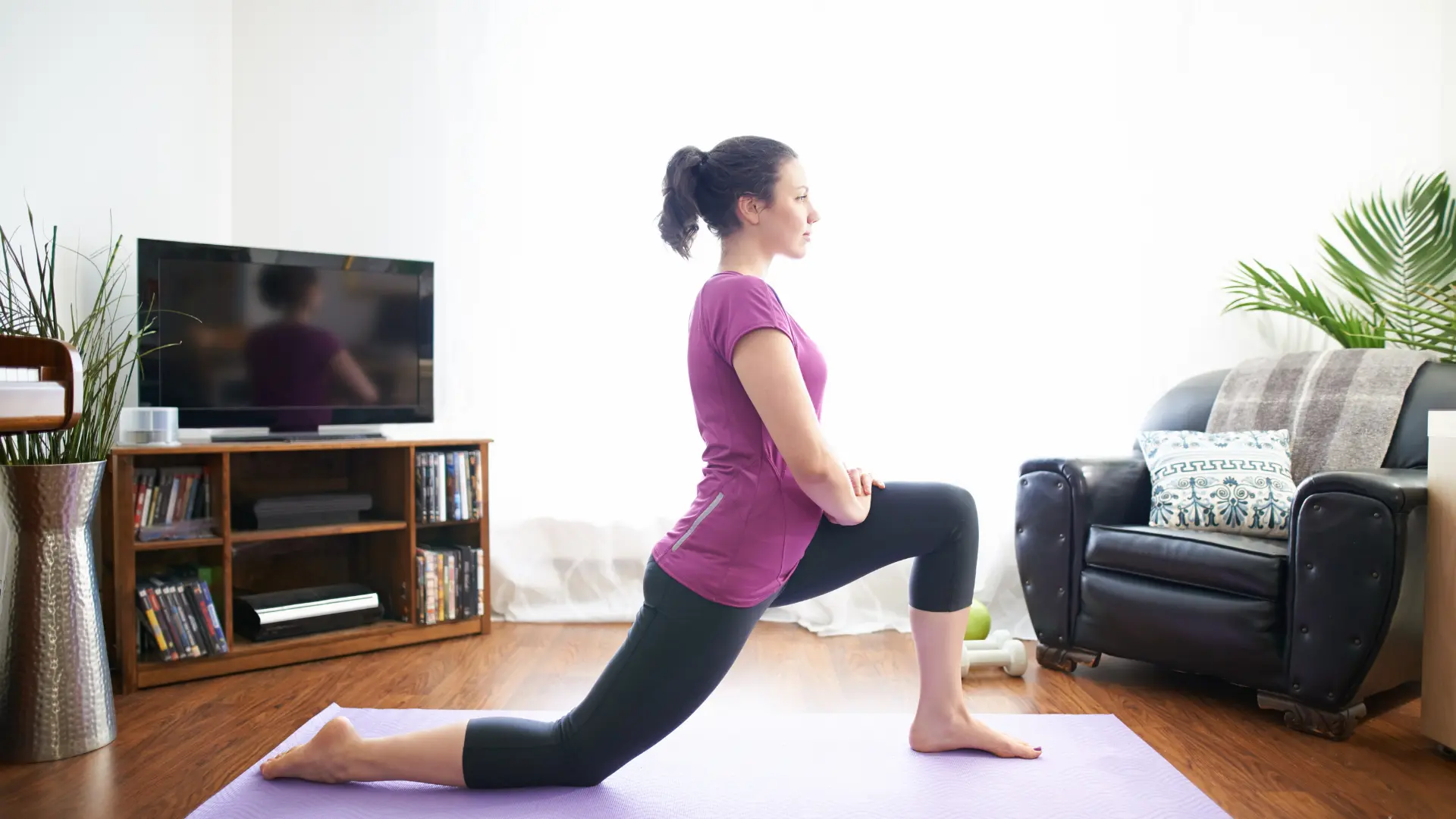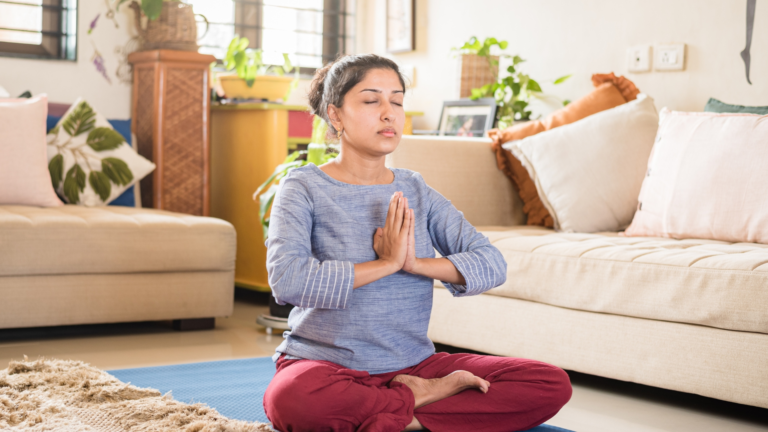Incorporating Yoga into Your Daily Routine: Tips for Home Practice
Life can be a whirlwind, right? Between work, family, and all the daily hustle, finding time for yourself can feel like a big ask. But here’s the good news: incorporating yoga into your daily routine doesn’t have to be a huge commitment or a complicated process. The global yoga market is set to grow by 9.6% each year from 2021 to 2027.
Imagine starting your day with a few stretches or unwinding in the evening with some deep breaths—sounds pretty great, doesn’t it? With a bit of creativity and the help of online yoga classes, you can easily weave yoga into your schedule, no matter how packed it might be. Ready to transform your routine and feel amazing? Let’s dive into some simple tips that will make adding yoga to your day a breeze!

1. Set a Realistic Schedule
One of the most common challenges people face with establishing a yoga practice is finding time. The key is to set a schedule that works with your daily life, rather than against it. Start by identifying a time of day when you can consistently dedicate 15-30 minutes to yoga. Whether it’s first thing in the morning to set a positive tone for the day, during your lunch break for a quick refresh, or in the evening to unwind, pick a time that feels natural and stick with it.
Tip: If daily practice feels overwhelming, start with 2-3 times a week. The consistency will build momentum, making it easier to increase frequency over time.
2. Create a Dedicated Yoga Space
Designate a specific area in your home for yoga practice. It doesn’t need to be large or fancy—a small corner with a yoga mat and some basic props can be perfect. Having a dedicated space helps to mentally prepare you for practice and makes it easier to get started. Consider adding elements that inspire you, such as a few candles, a plant, or calming artwork.
Tip: Keep your yoga space tidy and clutter-free to create a peaceful environment.
3. Start Small and Build Gradually
If you’re new to yoga, it’s important to start with manageable sessions and gradually increase their duration and complexity. Begin with basic poses and gentle flows. This approach not only prevents burnout but also reduces the risk of injury.
Tip: Incorporate a mix of stretching and strength-building poses to create a balanced routine. Poses like Downward Dog, Child’s Pose, and Warrior I are great starting points.
4. Explore Online Yoga Classes
One of the best ways to stay motivated and receive guidance is through online personalised yoga classes. They offer the flexibility to practice at home while providing access to expert instruction. Whether you’re looking for a guided session on flexibility, strength, or mindfulness, there’s an online class for every need.
Tip: Many platforms offer free introductory classes, so you can explore different styles and teachers without any commitment. Find a class or instructor that resonates with you and fits your schedule.
5. Incorporate Yoga into Daily Activities

Yoga doesn’t have to be confined to a mat. You can incorporate yoga principles into everyday activities. For example, practice mindful breathing while commuting or use yoga stretches to relieve tension during work breaks. Simple stretches like neck rolls or seated forward bends can be done anywhere and help keep your body limber throughout the day.
Tip: Try integrating short yoga breaks into your workday to combat stiffness and boost productivity.
Discover how to design your ideal morning yoga routine in our latest blog, “How Do You Create Your Perfect Morning Yoga Routine?” Explore tips and tricks to start your day refreshed and energized!
6. Use Technology to Your Advantage
There are numerous apps and online resources designed to support your yoga practice. From guided routines to tracking your progress, technology can be a valuable ally in your yoga journey. Apps often come with customizable features, such as setting reminders and tracking your practice history.
Tip: Set reminders on your phone to prompt you to practice. Even a 5-minute session can be beneficial and help build a consistent habit.
7. Listen to Your Body
One of the most important aspects of a sustainable yoga practice is learning to listen to your body. Yoga should feel good, not painful. If a pose or stretch feels uncomfortable, adjust or modify it as needed. Over time, you’ll develop a better understanding of your body’s limits and capabilities.
Tip: Incorporate relaxation techniques like deep breathing or meditation at the end of your practice to enhance overall well-being and connect with your inner self.
8. Set Goals and Track Progress
Setting personal goals can help you stay motivated. These could be as simple as mastering a new pose or as ambitious as completing a 30-day yoga challenge. Tracking your progress can provide a sense of accomplishment and encourage you to keep going.
Tip: Maintain a yoga journal to record your experiences, thoughts, and improvements. Reflecting on your journey can be incredibly rewarding.
9. Mix It Up

Variety can keep your practice interesting and engaging. Explore different styles of yoga, such as Hatha, Vinyasa, or Yin. Each style offers unique benefits and can target different aspects of your physical and mental health. Mixing up your routine also helps prevent plateaus and keeps you excited about your practice.
Tip: Experiment with different sequences and try incorporating props like blocks or straps to enhance your practice.
10. Invite a Friend to Join
Practicing yoga with a friend or family member can make it more enjoyable and provide additional motivation. Having a yoga buddy can also help you stay committed to your routine and create a shared experience that’s both fun and fulfilling.
Tip: Consider setting up a regular virtual yoga session with a friend if in-person meetups aren’t feasible.
11. Celebrate Your Progress
Acknowledge and celebrate your progress, no matter how small. Yoga is a personal journey, and each step forward is an achievement. Recognize the benefits you’re experiencing, whether it’s increased flexibility, better stress management, or a greater sense of calm.
Tip: Reward yourself for sticking to your practice, whether through a relaxing bath, a favorite treat, or simply taking time to reflect on your achievements.
12. Stay Patient and Persistent
Building a yoga practice takes time, and results may not be immediately visible. It’s essential to remain patient and persistent. Celebrate the small victories and stay focused on the long-term benefits of yoga.
Tip: Remind yourself of why you started practicing in the first place and keep that motivation at the forefront of your mind.
Conclusion
Incorporating yoga into your daily routine can be a deeply rewarding practice that enhances both physical and mental well-being. By setting a realistic schedule, creating a dedicated space, and exploring online yoga classes, you can make yoga a natural and enjoyable part of your life. Remember, it’s all about progress, not perfection. Embrace the journey, and let yoga become a cherished part of your daily routine.
So roll out your mat, take a deep breath, and enjoy the wonderful journey of yoga right from the comfort of your home.



